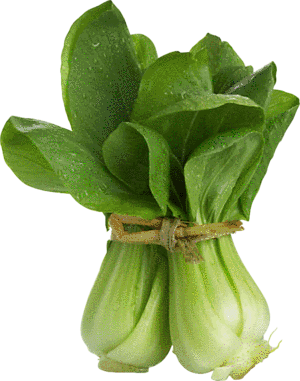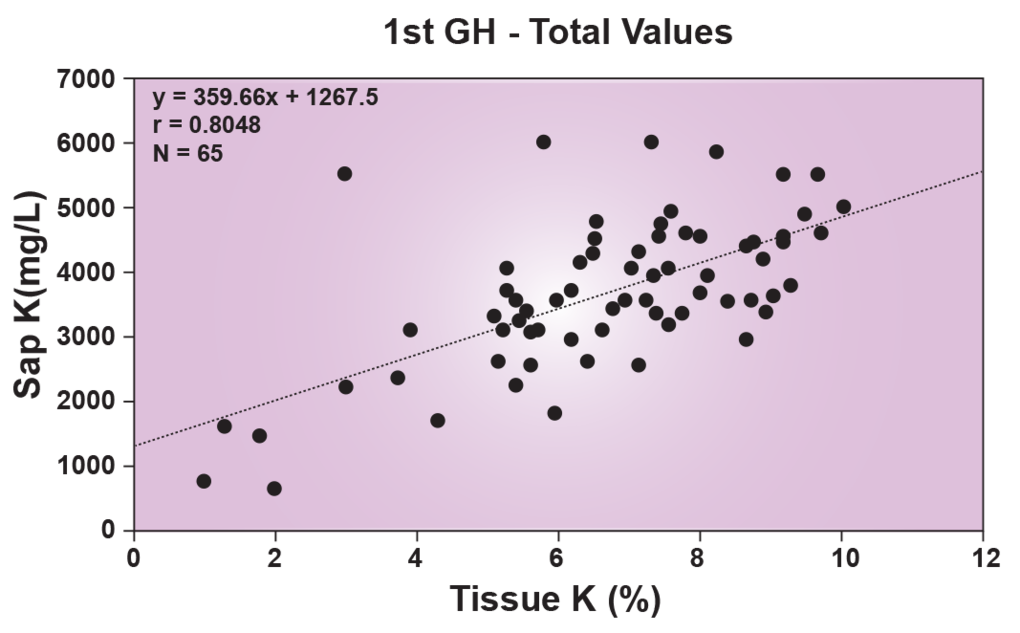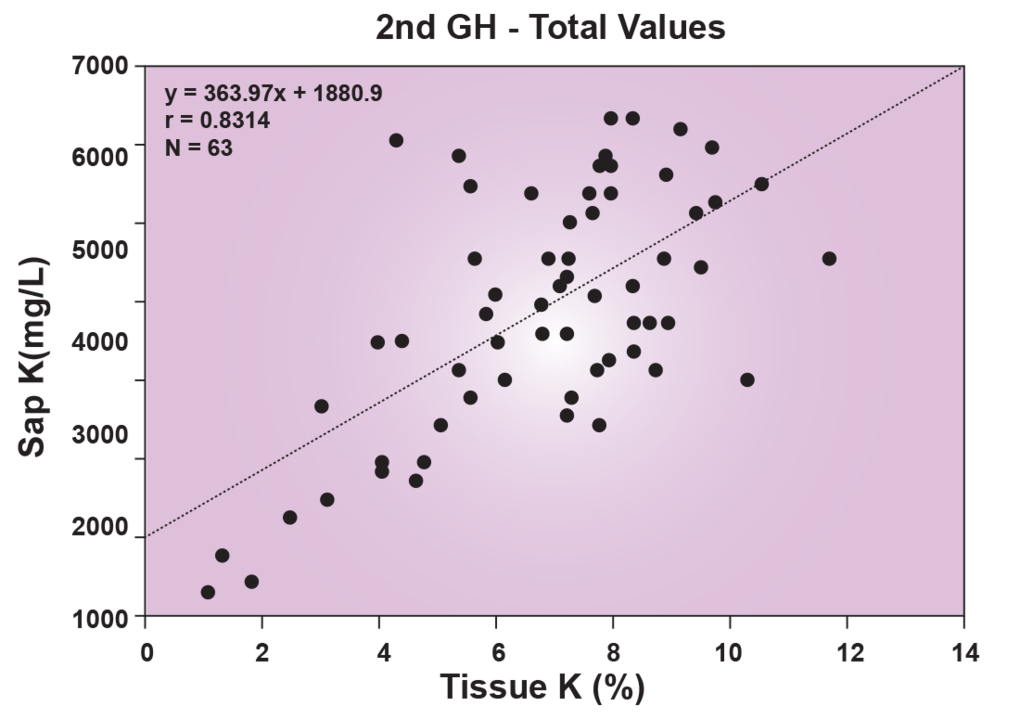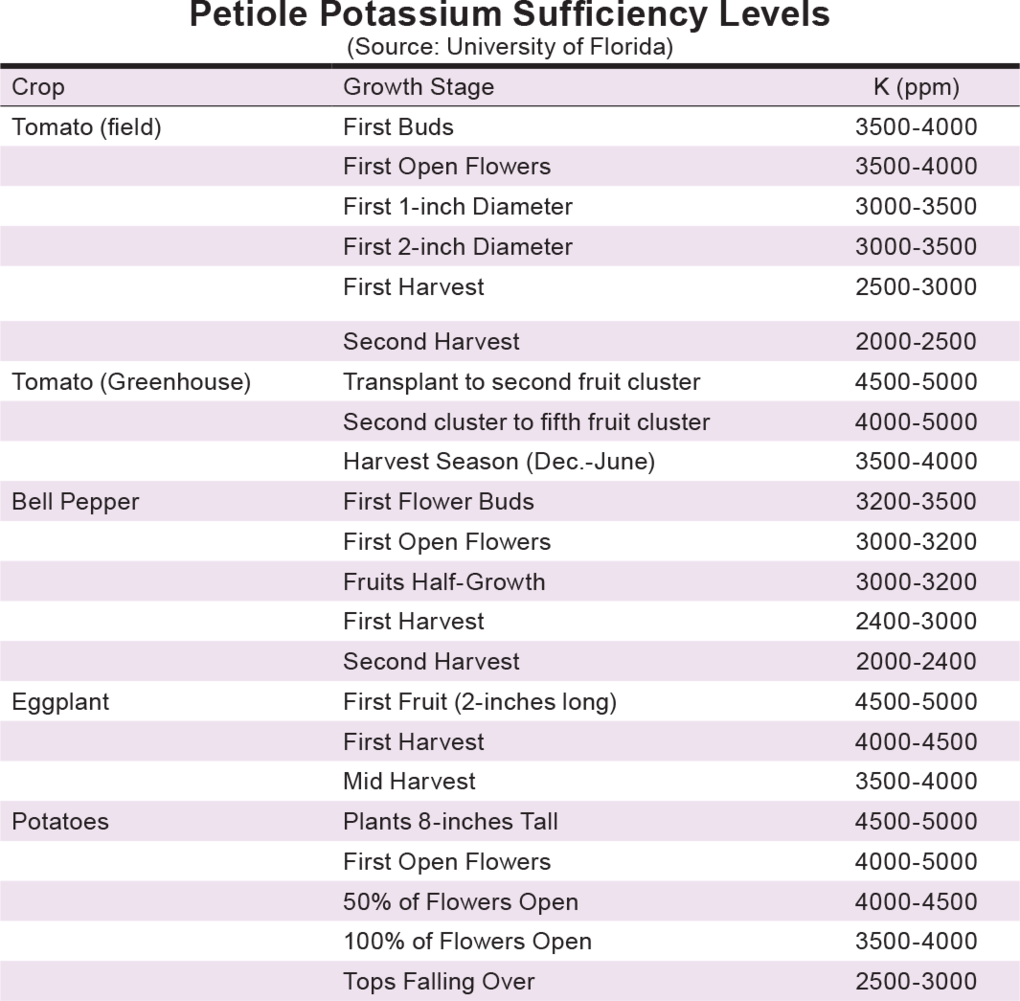

Trials revealed close significant correlation (r values were 0.80 and 0.93 for first trial and second trial, respectively) between the LAQUAtwin Potassium Ion meter readings and ICP results obtained from plant’s fresh petiole sap and dried tissue, respectively. This suggested that LAQUAtwin Potassium Ion meter could be an appealing field method substitute for rapid determination of potassium concentration in plant.


Plant tissue analysis has been used for evaluating the nutritional status of vegetable crops. The conventional laboratory method for plant tissue analysis is Inductively Coupled Plasma (ICP) spectrometry, which requires a dried plant tissue to be subjected to either wet digestion or dry ashing prior to analysis. Among the recent techniques for nitrate-nitrogen (NO3-N) and potassium (K) management in vegetable crops has been the use of petiole sap analysis to determine supplemental fertilizer needs.
The LAQUAtwin Potassium Ion meter was used to measure K concentration in fresh petiole sap of pak choi (Brassica rapa, Chinensis group) plants, which were grown, applied with K and other nutrients, and harvested at University of Hawaii’s Magoon Research facility. The results were compared to K concentration in dried tissue of the same plant analysed by wet digestion and ICP.
The pocket-sized LAQUAtwin Potassium Ion meter is ideal for on-site testing as it provides quick result with just a few drops of sample that doesn’t require tedious preparation. It eliminates the need to transport samples to a laboratory for costly and time-consuming ICP spectrometry analysis.
For LAQUAtwin Potassium Ion meter analysis, plant’s petioles were collected immediately after harvest at 5 weeks after emergence and fresh weights were recorded. Petioles were pressed in a garlic press to extract sap. One (1) ml of sap was diluted with deionized water to a volume of 5ml. After calibrating the LAQUAtwin Potassium Ion meter according to manufacturer’s instructions, few drops of the diluted sap were placed into the sensor of LAQUAtwin Potassium Ion meter to determine the potassium concentration.
For ICP spectrometry analysis, plants were placed in a conventional oven at 70°C and were dried for 72hrs. The dried weights were recorded. The dried samples were submitted to a laboratory for ICP spectrometry analysis to determine the potassium concentration.

Figure 1: Relationship between K concentrations in fresh petiole sap and dried tissue of pak choi plant measured by LAQUAtwin Potassium Ion meter and ICP Spectrometry respectively for 1st greenhouse trial (n= 65)

Figure 2: Relationship between K concentrations in fresh petiole sap and dried tissue of pak choi plant measured by LAQUAtwin Potassium Ion meter and ICP Spectrometry respectively for 2nd greenhouse trial (n= 63)
The K concentrations increased linearly in both the sap and dried tissue with increased amount of K applied (see figures 1 & 2) and the relationships were highly significant (P<0.0001). The correlation coefficient (r) was stronger between the LAQUAtwin Potassium Ion meter and ICP spectrometry results when totals of the replicates were used for correlation analysis – r values were 0.80 and 0.93 for first trial and second trial respectively. With these results, it was concluded that the LAQUAtwin Potassium Ion meter, which is easy to use and less expensive than standard laboratory analysis, is a valuable tool for onsite monitoring of plant’s K status. It was also concluded that 4500-5000 mg K/L for fresh petiole sap and 7.5% tissue are critical levels for K concentration in pak choi plant.

REV 0, 18 AUGUST 2015
��������ֱ��제품의 자세한 정보를 원하시면, 아래의 양식에 내용을 입력을 부탁드립니다.